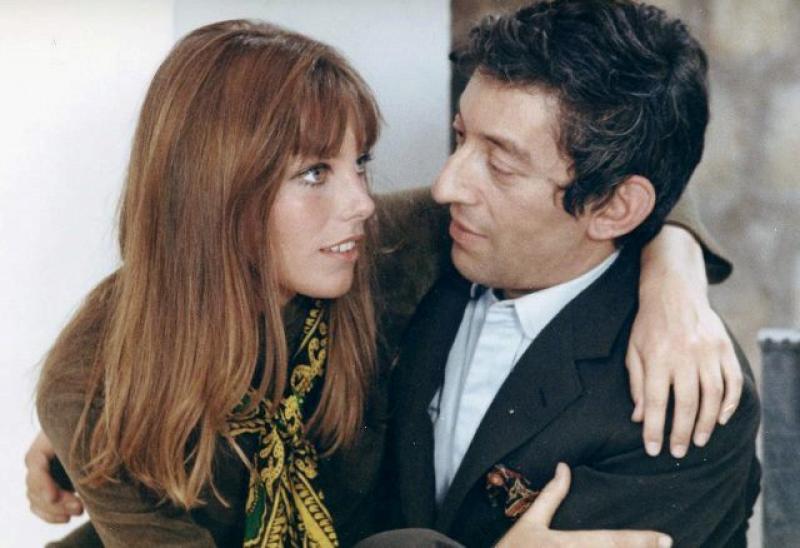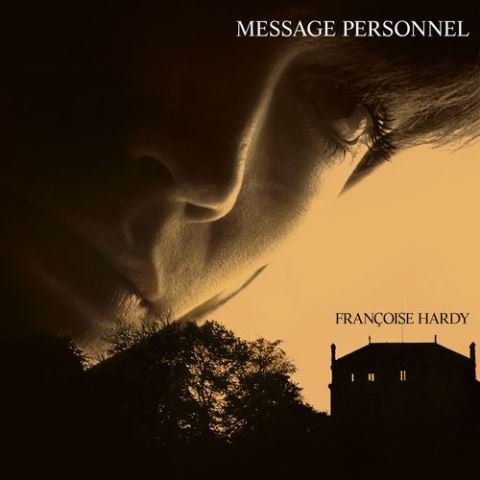Reissue CDs Weekly: Jane Birkin, Françoise Hardy | reviews, news & interviews
Reissue CDs Weekly: Jane Birkin, Françoise Hardy
Reissue CDs Weekly: Jane Birkin, Françoise Hardy
Serge Gainsbourg’s muse keeps the flame while quintessential French artist gets anniversary reissue

 Jane Birkin: Mes Images Privées de Serge / Françoise Hardy: Message Personnel
Jane Birkin: Mes Images Privées de Serge / Françoise Hardy: Message Personnel
The bond between Serge Gainsbourg and Jane Birkin still resonates. They met while on the set of the film Slogan in 1969 and were soon a headline-grabbing couple. Although they separated in 1980 and he died in 1991, Birkin still recorded his songs and continues to do so. Françoise Hardy’s public profile was more measured, but she was and is central to the fabric of French culture. The coincidence of these two releases being issued in the UK at the same time is about more than each being French. Gainsbourg also wrote for Hardy and his “L’Amour en Privé” appears on 1973’s Message Personnel. Coincidentally, each of these releases has been issued in the UK at the same time.
Birkin herself compiled Mes Images Privées de Serge. It is a handsome set: a fold-out digipack contains two CDs and a DVD. The spilt between the two CDs is defined by when Birkin and Gainsbourg were together. Disc one is pre 1980: disc two is from the years after their separation. The opener is an alternate version of “Jane B”. Otherwise, everything is familiar. The DVD collects Birkin's home movies of her, Gainsbourg, their children and families. Her narration can be heard in either French or English. Seeing these slices of their personal life is touching. Seeing the passing of time is poignant. Birkin has also recorded spoken introductions to some of the music tracks. The booklet is in keeping with this being a souvenir of Gainsbourg.
Collections tagged as the songs of Gainsbourg or similar abound, often with track selections which seem as though a dart has been flung at a board with song titles affixed to it. This though, is a selection of songs and performances which mean most to Birkin. She inspired him. He still inspires her. She is to him as Yoko Ono is to John Lennon. Her choices veer towards the reflective and observational. This is her narrative of life with and after Gainsbourg. Just as with the DVD, it’s a poignant listen.
 Hardy’s Message Personnel has been reconfigured as a double CD with disc one the original album. No bonus tracks distract. Disc two collects related singles, a clutch of inessential instrumental backing tracks, English- and German-language versions and five performances from radio and TV. The latter are special as Hardy had given up live shows by this point due to stage fright. The two essays in the booklet are perfunctory.
Hardy’s Message Personnel has been reconfigured as a double CD with disc one the original album. No bonus tracks distract. Disc two collects related singles, a clutch of inessential instrumental backing tracks, English- and German-language versions and five performances from radio and TV. The latter are special as Hardy had given up live shows by this point due to stage fright. The two essays in the booklet are perfunctory.
At its best, Message Personnel is wonderfully seductive. But it was a difficult album for Hardy to complete and lacks a unified voice. The Gainsbourg song, “L’Amour en Privé”, was from a film soundtrack and doesn’t fit the intimate mood suggested by the title. “L’Habitude”, a duet with Georges Moustaki, also renders the album less personal. The title track is a classic aural sigh, but this was – unlike her preceding four or five albums – an album where she sacrificed some of her identity.
Hardy's reflections on 'Message Personnel' were not forthcoming for its 40th anniversary. The silence probably says it all
What Message Personnel did have was a style intended to bring Hardy international – especially American – recognition. After having been with independent continental European labels since 1969, she signed with the US-owned Warner Brothers in 1973 and began working with Michel Berger, whose production and songs for Veronique Sanson had drawn her. Sanson was also signed to Warners and her Berger-fashioned Amoureuse album of 1972 attracted international attention but Kiki Dee scored a UK hit covering the title song. Hardy and Berger repeatedly clashed and Message Personnel was almost not completed. The final product was less than 30 minutes long. Despite the syrupy instrumentation and anodyne arrangements, there are gems with a great beauty such as “Pouce, au Revoir” and “L’Attente”. Berger's ear for the bland meant Hardy was often swamped.
Each of these releases recasts the familiar. With Mes Images Privées de Serge, another facet of Birkin’s feelings about Gainsbourg is revealed. But with Message Personnel, there is no such disclosure from Hardy. Her reflections on the album and her short-lived dance with Berger were not forthcoming for its 40th anniversary release. The silence probably says it all.
Buy
Explore topics
Share this article
The future of Arts Journalism
You can stop theartsdesk.com closing!
We urgently need financing to survive. Our fundraising drive has thus far raised £49,000 but we need to reach £100,000 or we will be forced to close. Please contribute here: https://gofund.me/c3f6033d
And if you can forward this information to anyone who might assist, we’d be grateful.

Subscribe to theartsdesk.com
Thank you for continuing to read our work on theartsdesk.com. For unlimited access to every article in its entirety, including our archive of more than 15,000 pieces, we're asking for £5 per month or £40 per year. We feel it's a very good deal, and hope you do too.
To take a subscription now simply click here.
And if you're looking for that extra gift for a friend or family member, why not treat them to a theartsdesk.com gift subscription?
more New music
 Music Reissues Weekly: Joe Meek - A Curious Mind
How the maverick Sixties producer’s preoccupations influenced his creations
Music Reissues Weekly: Joe Meek - A Curious Mind
How the maverick Sixties producer’s preoccupations influenced his creations
 Pop Will Eat Itself, O2 Institute, Birmingham review - Poppies are back on patrol
PWEI hit home turf and blow the place up
Pop Will Eat Itself, O2 Institute, Birmingham review - Poppies are back on patrol
PWEI hit home turf and blow the place up
 'Fevereaten' sees gothic punk-metallers Witch Fever revel in atmospheric paganist raging
Second album from heavy-riffing quartet expands sonically on their debut
'Fevereaten' sees gothic punk-metallers Witch Fever revel in atmospheric paganist raging
Second album from heavy-riffing quartet expands sonically on their debut
 theartsdesk Q&A: Soft Cell
Upon the untimely passing of Dave Ball we revisit our September 2018 Soft Cell interview
theartsdesk Q&A: Soft Cell
Upon the untimely passing of Dave Ball we revisit our September 2018 Soft Cell interview
 Demi Lovato's ninth album, 'It's Not That Deep', goes for a frolic on the dancefloor
US pop icon's latest is full of unpretentious pop-club bangers
Demi Lovato's ninth album, 'It's Not That Deep', goes for a frolic on the dancefloor
US pop icon's latest is full of unpretentious pop-club bangers
 Yazmin Lacey confirms her place in a vital soul movement with 'Teal Dreams'
Intimacy and rich poetry on UK soul star's second LP
Yazmin Lacey confirms her place in a vital soul movement with 'Teal Dreams'
Intimacy and rich poetry on UK soul star's second LP
 Solar Eyes, Hare & Hounds, Birmingham review - local lads lay down some new tunes for a home crowd
Psychedelic indie dance music marinated in swirling dry ice
Solar Eyes, Hare & Hounds, Birmingham review - local lads lay down some new tunes for a home crowd
Psychedelic indie dance music marinated in swirling dry ice
 The Lemonheads' 'Love Chant' is a fine return to form
Evan Dando finally gets back in the saddle with an album of new tunes
The Lemonheads' 'Love Chant' is a fine return to form
Evan Dando finally gets back in the saddle with an album of new tunes
 Music Reissues Weekly: Evie Sands - I Can’t Let Go
Diligent, treasure-packed tribute to one of Sixties’ America’s great vocal stylists
Music Reissues Weekly: Evie Sands - I Can’t Let Go
Diligent, treasure-packed tribute to one of Sixties’ America’s great vocal stylists
 'Deadbeat': Tame Impala's downbeat rave-inspired latest
Fifth album from Australian project grooves but falls flat
'Deadbeat': Tame Impala's downbeat rave-inspired latest
Fifth album from Australian project grooves but falls flat
 Heartbreak and soaring beauty on Chrissie Hynde & Pals' Duets Special
The great Pretender at her most romantic and on the form of her life
Heartbreak and soaring beauty on Chrissie Hynde & Pals' Duets Special
The great Pretender at her most romantic and on the form of her life
 The Last Dinner Party's 'From the Pyre' is as enjoyable as it is over-the-top
Musically sophisticated five-piece ramp up the excesses but remain contagiously pop
The Last Dinner Party's 'From the Pyre' is as enjoyable as it is over-the-top
Musically sophisticated five-piece ramp up the excesses but remain contagiously pop

Add comment